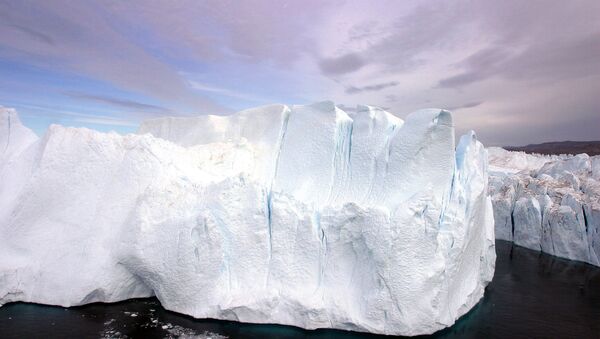Greenland’s largest, most vulnerable glaciers may soon lose a more sizable amount of ice than ever previously predicted should emissions of greenhouse gases like carbon dioxide continue to accelerate the melting, according to new findings published Tuesday in the journal Nature Communications.
Researchers examining the country’s three largest glaciers - Jakobshavn Isbræ, Kangerlussuaq and Helheim - found that the trio make up roughly 12% of Greenland’s entire ice sheet, but that they have lost nearly 3 trillion tonnes of ice from the years 1880 to 2012 and as such have contributed to a 8.1-millimeter rise in global sea levels over time.
Although the main driver of sea-level spikes has been attributed to melting glaciers as a result of global warming, the recent rise in water levels has largely been driven by the melting ice sheets of Greenland and Antarctica, measurements from NASA satellites recently determined.
Based in Denmark and Britain, officials involved in the newly published study came to their conclusions by reviewing satellite data and historical images taken during aerial surveys from the early to mid-20th century by Danish explorer Lauge Koch. Tapping both sources, officials used the data to identify “trimlines” to determine how much the glaciers had receded over time.
Shfaqat Abbas Khan, a researcher involved in the study, told AFP that “historical measurements over the 19th and 20th century may hide important information that can significantly improve our future projections.”
However, researchers also used models which ultimately led to the determination that should nothing be done to curb global greenhouse gas emissions, temperatures would skyrocket to more than 3 degrees Celsius above preindustrial levels by 2100.
Additionally, models predicted that sea levels would rise between 9.1 to 14.9 millimeters by the end of the century.
“To look at more than a hundred years gives us confidence that our measurements are correct, and not caused by short-term weather fluctuations,” Anders Bjørk, a co-author of the study, told Earther in an emailed statement. “This study tells us that it is likely that the best models we have at the moment are very likely underestimating what will happen in the future.”
“What the models are missing is higher-resolution input data and the ability to be coupled with other models,” the ice researcher noted, adding that even the best models are unable to factor in a variety of aspects affecting ice loss.
The latest finding comes after a study published in October concluded that Greenland’s ice sheet was melting at its fastest rate within the last 12,000 years.

